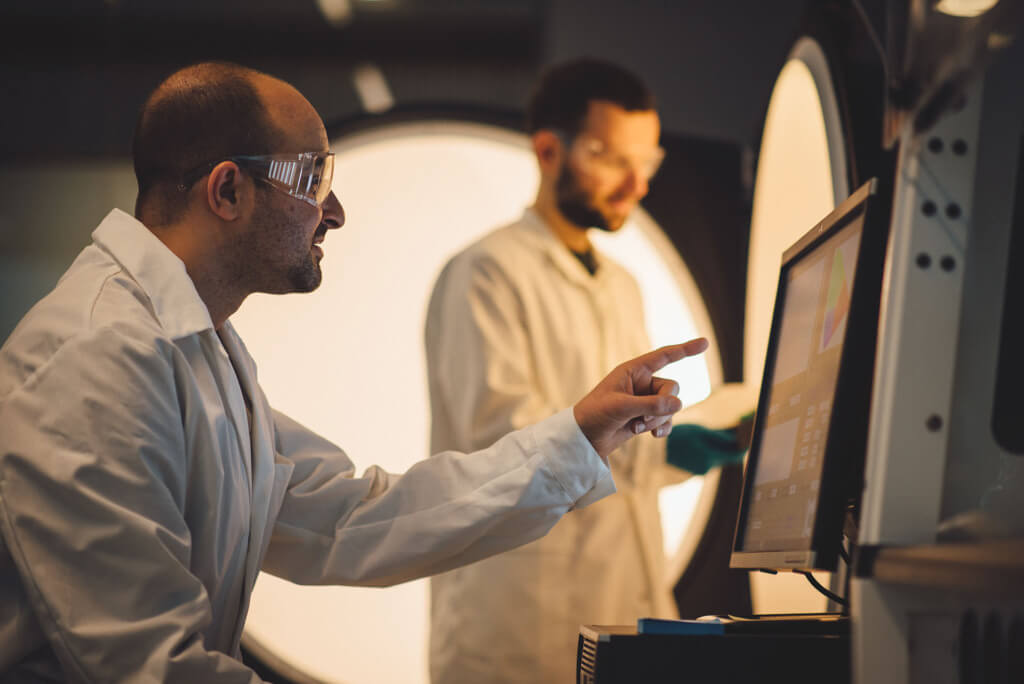
DeLighted talk with Dr. Anne Berends about our SunLED technology
General / Life Science / Sunled
Program

Our Life Science program focusses on inventing and developing lighting technologies that actively contribute to improved health and well-being. In the past, we have developed materials to enable novel light therapies to treat skin diseases . As of 2018, we have been conducting ground breaking research in the field of photobiomodulation. This is where our focus point currently lies. Building on the expertise of our staff and (scientific) collaborators, Seaborough is constantly following scientific developments in the field of lighting in order to find new solutions to contribute to human health and well-being. Our most recent innovation is SunLED.
Light is a vital source for life and for human health and well-being, just like food, water and air. We need visible light to see the world around us, to enjoy the beauty of nature or arts and to do our job. But we don't only need light to see; an overwhelming amount of scientific evidence has been published about the importance of light for human health and well-being. (Read more)
The human body – and in particular the skin and the eyes – interacts with light in many different ways. Sunlight is essential for vitamin D3 generation in the skin, and is associated with many health aspects like blood pressure and bone strength. Light also strongly influences our circadian rhythm, which helps us sleep, and helps us recover well; both physically and mentally.
Both the visible and invisible parts of the solar spectrum affect our physical and mental health. Unfortunately, indoor lighting is of much lower intensity and quality compared to outdoor lighting. One of the invisible parts of the solar spectrum is the near-infrared light. Referred to as ‘photobiomodulation’ (PBM), a variety of positive effects of exposure to near-infrared (NIR) light has been reported, including but not limited to, wound healing and an improved immune system. Even though this near-infrared light has all kinds of positive effects on the human body, it is currently absent indoor lighting.
Seaborough’s life science program focusses on bringing these healthy aspects of sunlight inside, and can therefore make a true difference for people that spend their lives indoors; most of us!
The beneficial effects of photobiomodulation are well recognized by scientists around the world. The effects of red and near-infrared light are often applied directly on the problematic area, e.g. the skin for wound healing or the head for brain trauma. As we know that near infra-red light can travel deep into the skin, we hypothesized that photobiomodulation can be a systemic effect: the whole body benefits.
Our hypothesis was tested in an independent clinical study performed by research & consultancy company Chrono@Work with advice from Prof. Roelof Hut from the University of Groningen and Prof. Praveen Arany from the University of Buffalo. The results of these trials were very positive! Read more on our SunLED page.
With SunLED, we have developed a technological solution to include the right wavelengths and intensity of near-infrared light in everyday products, to generate photobiomodulation and to deliver great health effects to people spending most of their time indoors. Our highly skilled engineers have ensured this technological solution is most energy efficient and sustainable, and have made it possible to use this technology in any conceivable product.
Seaborough is currently seeking partnerships (manufacturers, lightlingbrands) in integrate and market the SunLED technology!

In the past couple of years we have made incredible progress in our research into the effects of photobiomodulation and we intend to keep on researching these effects long-term.
We have already seen some amazing results and would very much like to learn more about this mechanism and broaden our understanding of this subject, in order to keep on optimizing our technology for a healthier world.